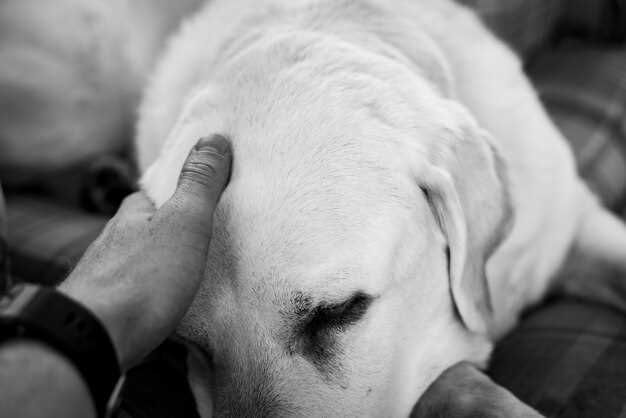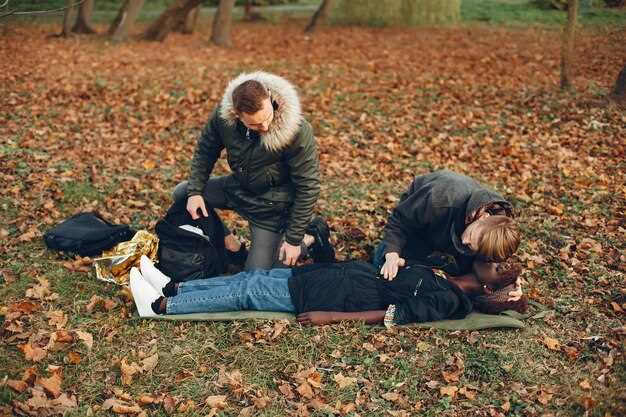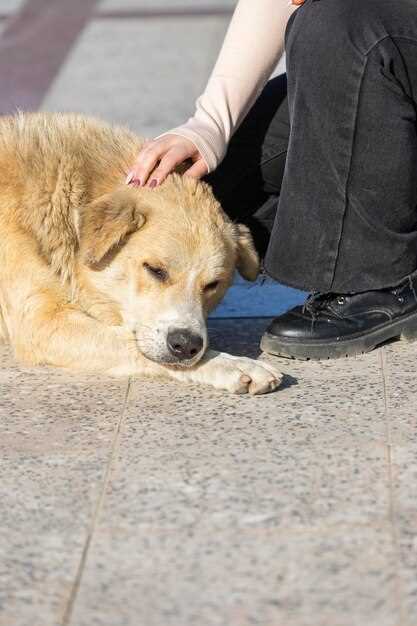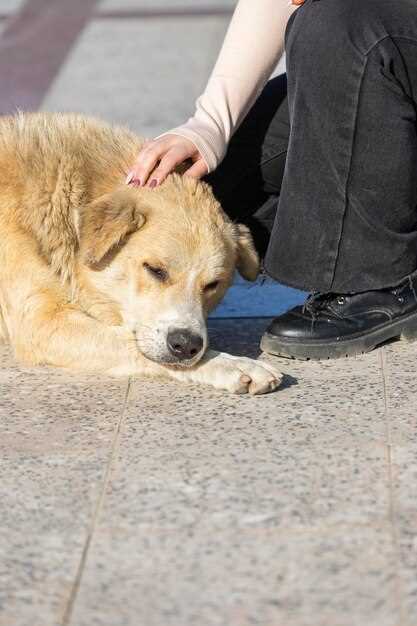The Stages of Pet Grief – Navigating the Emotional Journey
Recognize that the loss of a pet triggers a unique set of emotions. Many experience a range of feelings that can resonate deeply and require time to process. Understanding these stages can offer clarity and comfort during a painful period.
The initial phase often includes shock and disbelief. Emotions can feel overwhelming, and it’s normal to question the reality of your loss. Allow yourself moments to acknowledge these feelings; they are a natural response to grief.
As the emotional tide shifts, sadness often becomes prominent. This stage might bring tears, isolation, or a longing for your pet’s presence. Connecting with supportive friends or family can help alleviate feelings of loneliness and provide a space for shared memories.
Moving forward, some may experience anger. This phase can be directed toward oneself, fate, or even the situation surrounding the loss. Channeling this energy into constructive outlets, like creative expression or physical activity, can ease tension and help in processing these emotions.
Eventually, acceptance may emerge. This doesn’t mean forgetting your beloved pet, but rather finding peace with the loss. Celebrating their life through memorials or activities that honor their memory can provide closure and mark a positive shift in your emotional landscape.
Recognizing these stages equips you to navigate through grief with compassion for yourself. Embrace the process and seek support from communities or professionals who understand the depth of pet loss. This emotional journey, while deeply personal, often leads to profound healing.
Understanding the First Reactions to Pet Loss

The initial reaction to pet loss often involves shock or disbelief. Many pet owners find themselves questioning the reality of the situation. A helpful approach is to allow yourself to feel these emotions fully. Acknowledge your feelings, even if they seem overwhelming.
Guilt frequently accompanies grief. Owners may replay their pet’s final moments, wondering if they could have done something differently. Address this guilt by writing down your thoughts. This exercise can help clarify emotions and promote healing.
Anger is another common response. This anger might be directed at yourself, others, or even the situation. Finding a constructive outlet, such as going for a walk or engaging in physical activity, can ease this frustration and provide clarity.
Sadness may settle in after the initial reactions. Crying is a natural way to express grief. Don’t hesitate to reach out to friends or family who understand your bond with your pet. Sharing memories can bring comfort and validation.
Consider creating a small memorial for your pet. This act can serve as a meaningful tribute and help channel your emotions into a positive experience. Whether it’s planting a tree, creating a scrapbook, or simply lighting a candle, this provides a source of solace.
Understand that each person’s grief is unique. Allow yourself to feel your emotions without judgment. Embrace the memories of your pet, as they are a part of your life story. Seek support if needed, whether through friends, family, or pet loss support groups. Reaching out can make a significant difference in processing your feelings.
Recognizing the Signs of Denial in Pet Grief

Identify behaviors that suggest denial in yourself or others. Look for statements like, “My pet will come back,” or avoiding discussions about the loss. These phrases indicate a refusal to accept the reality of the situation.
Pay attention to emotional reactions. A person might act as if their pet is still alive, setting a place for them at the dinner table or carrying around their favorite toys. These actions highlight a struggle to confront the loss directly.
Notice changes in daily routines. Ignoring pet-related tasks or avoiding places where the pet used to be can signify denial. Someone may refuse to remove the pet’s bed or toys, holding onto them as if doing so would negate the loss.
Observe social interactions. A withdrawn attitude or dismissive reactions when others offer condolences hints at denial. Individuals may minimize their grief, saying things like, “I’m fine” or “It’s just a pet,” masking deeper feelings.
Watch for physical symptoms of stress. Insomnia, anxiety, or changes in appetite can manifest from the emotional turmoil of denial. These signs highlight the impact of unresolved grief.
Encourage open conversations about feelings. Offer a safe space to share memories and emotions, helping individuals address their grief in a supportive environment. Talking about the pet fosters acceptance and healing.
Ultimately, recognize that denial can serve as a protective mechanism. Understanding this can help you support those grieving and guide them towards accepting their loss with compassion.
Exploring Anger and Its Role in Mourning

Recognize that feeling anger after losing a pet is a natural response. Channel this emotion constructively by identifying specific triggers, whether it’s frustration with yourself, the situation, or even the loss itself. Formulating your thoughts can help transform that anger into a productive outlet.
Communicate your feelings. Share your challenges with friends or support groups who understand pet loss. Talking about your anger helps to alleviate that burden and fosters connections with those who have experienced similar loss. Journaling is another powerful tool; write about your emotions to gain clarity and release some of the intensity.
Engage in physical activities to release pent-up frustration. Exercise acts as a stress reliever, helping to enhance mood levels and reduce feelings of anger. Consider taking a walk, joining a fitness class, or even participating in a local pet-related charity event. This not only helps alleviate negative emotions, but also connects you with a community of like-minded individuals honoring their own pets.
Set aside time to remember the joy your pet brought into your life. Create a memorial space, gather photos, or share happy memories with others. Allowing yourself to reflect on the positive aspects can mitigate feelings of anger, offering a balanced perspective on your pet’s life and your feelings around the loss.
Practice self-compassion. Acknowledge that anger is a part of your grief and doesn’t define your entire experience. Give yourself permission to feel without judgment, recognizing that this stage is a stepping stone toward eventual healing.
How Bargaining Shapes the Grieving Process
Bargaining serves as a critical stage in pet grief, allowing individuals to cope with the overwhelming pain of loss. During this phase, people often find solace in negotiating with themselves or a higher power. This negotiation may involve thoughts like, “If only I had taken my pet to the vet sooner” or “I promise to cherish every moment with my next pet.” These reflections help mitigate feelings of guilt or helplessness.
Recognizing Bargaining Thoughts
Being aware of bargaining thoughts can help individuals understand their emotional state. Acknowledging these thoughts enables a clearer path through grief. Journal your thoughts or talk to someone who understands. This practice not only validates your feelings but can also lead to healthier coping strategies. Embrace these thoughts as a natural part of the grieving process without assigning blame to yourself.
Transitioning Past Bargaining
Transitioning past the bargaining stage requires self-compassion. Focus on honoring your pet’s memory through meaningful actions, like creating a scrapbook or supporting an animal charity. Engaging in these activities can shift your mindset from self-blame to remembrance and gratitude, allowing emotional healing. Additionally, consider seeking professional support if bargaining becomes overwhelming. Therapy can provide tools to process these feelings more effectively.
Ultimately, bargaining reflects the depth of your love for your pet. Recognizing this stage allows for personal growth and the potential to find peace and acceptance over time.
The Depths of Sadness: Managing Emotional Pain
Engage in a daily journaling practice to express your emotions. This activity allows you to articulate feelings that may be difficult to discuss openly. Schedule a specific time each day to write down your thoughts, memories of your pet, and how you’re coping. This consistent reflection can provide clarity and help lighten emotional burdens.
Establish a Support System
Connect with friends, family, or support groups who understand the bond you shared with your pet. Sharing stories fosters a sense of community and reduces feelings of isolation. Consider joining online forums or local pet loss support groups to find others who can relate to your experience.
- Seek out reputable online communities focused on pet loss.
- Attend local meetups or workshops centered around grief support.
- Share your journey with trusted friends who can lend a listening ear.
Practice Self-Care
Prioritize your well-being by engaging in activities that bring you joy and peace. Incorporate regular exercise, healthy eating, and sufficient sleep into your routine. Acts of self-care can uplift your mood and strengthen your emotional resilience during difficult times.
- Take daily walks or exercise to release endorphins.
- Try meditation or yoga to foster mindfulness.
- Indulge in hobbies or creative pursuits that make you happy.
Consider developing a memorial for your pet. This might include creating a photo album, planting a tree, or holding a small memorial service. This act honors their memory and can provide closure while also serving as a tangible reminder of the love you shared.
Recognize and accept your feelings of grief. Allow yourself to experience sadness, anger, or confusion without judgment. Emotions are natural responses to loss, and acknowledging them is a critical step in the healing process.
Accepting the Reality of Loss: Finding Closure
Honor your pet’s memory by creating a meaningful space or ritual. This could be as simple as setting up a dedicated area with their favorite toys or photos. Engage in activities that remind you of the joy they brought into your life. Consider writing a letter to your pet expressing your feelings, sharing memories, and saying goodbye. This act can provide emotional relief.
Connecting with Others
Talk to friends or family members who understand your grief. Sharing stories or reminiscing can help in processing your feelings. Joining a pet loss support group allows for connections with those experiencing similar emotions. You’ll find comfort in knowing you’re not alone and that others appreciate the bond between pets and their owners.
Finding Ways to Memorialize
Creating a lasting tribute can aid in finding closure. Options might include planting a tree in their memory, making a photo album, or donating to an animal charity in their name. Consider celebrating their life on their birthday or adoption day to keep their memory alive in a positive way. This helps retain the joy they brought, allowing you to cherish the moments while moving forward.
Celebrating Your Pet’s Life: Creating Meaningful Tributes
Create a dedicated space in your home to honor your pet. Use a shelf or table to display their favorite toys, photos, and any awards or certificates they earned. This area becomes a personal memorial where you can reflect and celebrate their life daily.
Engage in Creative Expression
Channel your feelings into creative projects that commemorate your pet:
- Memory Book: Assemble a scrapbook featuring pictures, anecdotes, and special memories. Include notes from friends and family who shared moments with your pet.
- Artistic Tribute: Create a painting, drawing, or sculpture of your pet. This process can be therapeutic and allows you to express your love visually.
- Poetry or Letters: Write a poem or letter addressed to your pet, sharing your emotions and what they meant to you. Reading it aloud can be a cathartic experience.
Host a Celebration of Life
Invite family and friends to share in a celebration of your pet’s life. This gathering can include:
- Sharing Stories: Encourage guests to recount their favorite memories. This helps everyone connect through shared love and joy.
- Plant a Tree or Flower: Commemorate your pet by planting something in their name. Choose a location that will grow and thrive, symbolizing their ongoing presence in your life.
- Candle Lighting: Light candles to create a peaceful atmosphere. This simple act can connect everyone in remembrance and gratitude.
These actions don’t just help you process grief; they also keep your pet’s spirit alive in a meaningful way. The focus shifts from loss to celebration, honoring the joy your pet brought into your life.
Seeking Support: Connecting with Others Who Understand
Join a local pet loss support group. Sharing experiences with others who have faced similar losses can provide comfort and understanding. Look for meetings at animal shelters, community centers, or veterinary clinics. Many groups also offer online sessions, allowing you to connect from home.
Online Communities
Engage in online forums and social media groups dedicated to pet loss. Platforms like Facebook have numerous groups where members share stories, advice, and resources. These spaces create a network of support and reminders that you are not alone in your feelings.
| Online Resources | Description |
|---|---|
| Facebook Groups | Connect with others in groups focused on pet loss and grief. |
| Pet Loss Chat Services | Chat services offering support through text or video calls with counselors. |
| Grief Blogs | Read personal experiences and insights on coping mechanisms. |
Talking to Friends and Family
Open up to supportive friends and family members. Expressing your feelings can lighten the emotional burden. Share stories about your pet that highlight happy memories. This not only honors your pet’s life but also helps others understand your grief.
Remember, everyone’s grief is unique. Choose the support options that resonate with you and your emotional needs. Take your time to find the right community or resources that make your experience feel acknowledged and validated.
Video:
Grief Expert Julia Samuel on the Secret to Coping With Death | Lorraine
Grief Expert Julia Samuel on the Secret to Coping With Death | Lorraine by Lorraine 371,128 views 7 years ago 5 minutes, 17 seconds
Q&A:
What are the typical stages of pet grief and how can they manifest?
The stages of pet grief often mirror those experienced in human loss, typically including denial, anger, bargaining, depression, and acceptance. In denial, an individual may struggle to accept their pet’s passing and might even feel disbelief. Anger can arise as a response to the loss, which might be directed towards oneself, others, or even the situation itself. Bargaining often involves trying to negotiate or make deals to reverse the loss, while depression might manifest as deep sadness and withdrawal from daily activities. Finally, acceptance is when an individual comes to terms with the loss, allowing them to cherish memories while moving forward with their life.
How can someone cope with the feelings of guilt after losing a pet?
Feelings of guilt are common after the loss of a pet, and coping with them requires acknowledging these feelings instead of suppressing them. It can be helpful to talk to friends, family, or a counselor about your feelings. Reflecting on the positive moments shared with your pet can also help shift the focus away from guilt. Writing a letter to your pet expressing your feelings can be a cathartic experience. Joining a support group where others share similar experiences can also provide comfort and insight into handling guilt.
Are there any rituals or memorials that can help in the grieving process?
Creating rituals or memorials for a lost pet can be a meaningful way to honor their memory and facilitate healing. This could include planting a tree or flowers in their memory, making a scrapbook of photos and memories, or holding a small ceremony with friends and family who understand your loss. Some people choose to keep a part of their pet, such as a collar or paw print, as a lasting tribute. These actions can offer solace and a way to cherish the bond shared with the pet.
How long does the grieving process typically last for pet owners?
The grieving process varies significantly from person to person and can depend on various factors, such as the relationship with the pet, the circumstances of the loss, and individual coping mechanisms. For some, grief may last only a few weeks, while others may feel sadness for months or even years. It’s important to allow oneself the time to grieve without judgment, recognizing that this process is unique to each individual and their connection with their pet.
What are some signs that someone might need additional support during their pet grief?
Signs that someone might need additional support include prolonged sadness that interferes with daily life, overwhelming feelings of guilt, isolation from friends and family, or neglecting personal care and responsibilities. If an individual feels unable to move through their grief and finds that it is affecting their mental health significantly, seeking help from a professional, such as a counselor or therapist, can be beneficial. Support groups specifically for pet loss can also provide a safe space for sharing feelings and experiences.
What are the common stages of pet grief, and how can I identify them in myself after losing a pet?
The common stages of pet grief often mirror those described in human grief models and typically include denial, anger, bargaining, depression, and acceptance. Denial may manifest as initial disbelief that your pet is really gone. You might find yourself looking for your pet or expecting them to greet you at the door. Anger can arise as frustration about the situation, directed at yourself, the vet, or even the circumstances surrounding your pet’s passing. Bargaining might include thoughts like “If only I had taken them to the vet sooner.” Deep sadness often characterizes the depression stage, where feelings of emptiness and longing for your pet become overwhelming. Finally, acceptance doesn’t mean forgetting your pet; rather, it means learning to live with the loss and keeping their memory alive. Recognizing these emotions is a vital part of healing, and it’s important to validate your feelings during this hard time.
How can I support a friend or family member who is grieving the loss of their pet?
Supporting someone who is grieving can be challenging, but your empathy and understanding can make a significant difference. Start by simply being there for them; let them share their feelings without judgment. Acknowledge their loss and remind them that it’s okay to feel sad. Offering practical help, like assisting with memorial arrangements or helping around the house, can also ease some of their burden. Additionally, consider suggesting they commemorate their pet in a meaningful way, whether through a memorial service or planting a tree in their memory. It’s important to give them time and space, as grief does not follow a set timeline. Make sure to check in on them regularly, as continued support may be needed long after the initial loss.
